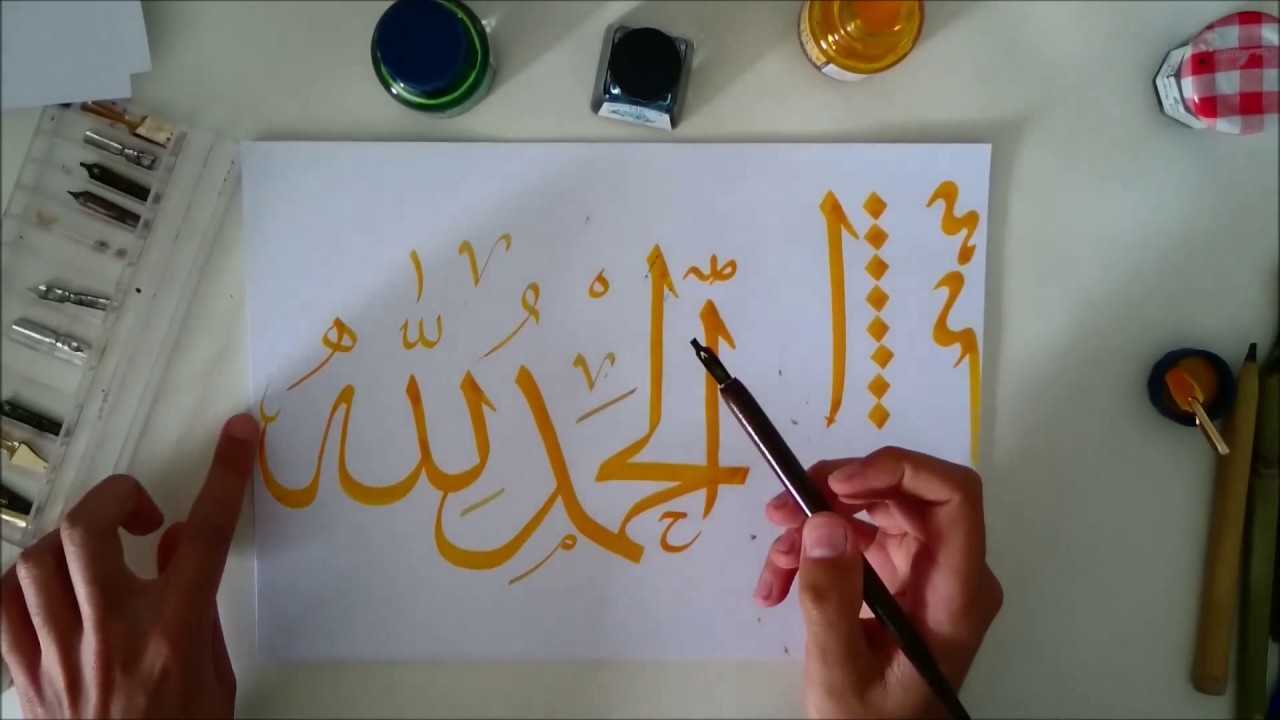Complete Guide about Learning Arabic Calligraphy
Overview
Before we begin working with calligraphy in its proper sense, a brief introduction to the script and the fundamentals of the Arabic alphabet is required so that everyone, especially those without a prior understanding of the language, can benefit from this course. This is the reason why the first lesson feels so much like a lecture. Although we don't always learn much about the script itself in school or daily life, even Arabic speakers may learn something new from this site.
The typical flowing scripts that the term "Arabic calligraphy" conjures up are not what I intend to teach in my new series of simple Arabic calligraphy classes. Even if they are stunning, they require a lot of formal training to draw them correctly, and it takes even longer to be able to communicate oneself via them (Ibn al-Bawwâb, one of the great figures in the art, advised making patient copies of your habit).
We'll also examine a few contemporary Arabic typefaces available from Envato Elements. After watching this Arabic calligraphy beginner instruction, scroll down to locate the best Arabic fonts for your digital projects. There are several high-quality Arabic calligraphy fonts available here from Envato Elements.

What This Little Arabic Calligraphy Course Can Teach You
I created this course, a digital edition of the one I teach in London, for anyone who wants to learn Arabic calligraphy (which I'll refer to as "khat") in inventive ways. Here, we'll discuss:
- A history of Arabic scripts: Kufic vs. rounded scripts
- Arabic characters
- How to calligraph Arabic characters
- Simple Arabic calligraphy drills
The course material is 100% original since I crystallized it from my own practice, the foundation of which I learned from a non-traditional teacher who gave me no theory instruction at all but instead had me put this knowledge to use for many years until it came naturally. As a result, it may not cross paths with any formal classes offered by calligraphers who hold an official license (ijâza).
The goal of the Learn Arabic Calligraphy series is to help you understand the letters and how they are put together so that you can use them to create and personalize your work, as I have done. It is not to teach you how to accurately duplicate shapes. To achieve this, we'll be using the Kufic script.
A History of Kufic and Rounded Scripts
The so-called rectilinear scripts (Kufic) and the cursive or round scripts are the two main families of Arabic calligraphic scripts. Although Kufic is much too frequently presented as if it were a single, distinct script among the others, that is incorrect, and it can only be artificially reduced to a formula. I'll briefly outline the various histories of these two families to make this clear before highlighting their Key distinctions. (Notice that we apply all of the names by which we identify the scripts in retrospect. If at all, historical sources used them more freely.

The beginning of rectilinear scripts
The people of the Arabian Peninsula were familiar with writing in pre-Islamic times, and a crude Arabic script was in use. Being a society with a strong oral tradition, they did not need it, thus it was rudimentary. The oldest manuscripts that have reached us have all the inconsistencies of a system that hasn't yet established itself.
Scripts for "Rising of the Round"
To handle the enormous amounts of administrative work in the Mashriq (Arabic for "sunrise" or "east," the Levant and the Middle East), where the capitals of the Muslim world were always located, a profusion of professional scribes were required. This inevitably resulted in the rise of cursive or round scripts, which are easier to write and better suited to the smaller scale of letters and official documents.
Comparison
Al-that al-mansûb, or "the script that conforms, that is regulated," is the Arabic name for round scripts. The round scripts are formal, which is the fundamental distinction between them and Kufic. Each letter must be written according to very particular standards, which must be rehearsed until the hand naturally follows them.
That works quite well but at the sacrifice of artistic flexibility. The fact that a calligrapher's work appeared to be completely free of human hands and personality was the mark of a truly outstanding calligrapher. Round scripts are easier to teach—literally a no-brainer—but more difficult to master for this reason.
While Kufic is challenging to teach and requires a lot of engagement and nuance from the student, because it is an approach rather than a visual formula, each learner's work is thus entirely their own. "The return to Kufic is the return to the time of the beginning of creation," as my teacher described it.
The Arabic Letters
Arabic language proficiency is not necessary to master Arabic calligraphy. You can work with that, and several languages, including Persian and Urdu, employ this script. But you do need a certain familiarity with the letters; therefore, in this first session, we need to understand writing itself before we can start learning calligraphy, or "beautiful writing."
The Phoenician alphabet is where both the Arabic and Latin alphabets have their roots. They are consequently similar in certain ways (for example, the letters are similar in most cases), yet they differ greatly in other ways as well. Here are some features to be aware of that a user from the West would find most difficult:
Arabic is written from left to right
There are only 18 letterforms (morphemes) for the 28 sounds because there are only 28 letters, several of which are distinguished by dots (phonemes). When we carefully examine the letters, there is far less to be discovered.
Vowel sounds are denoted by a system of diacritics, which I will go over in more depth in a later session. There are no vowels. Anything here is optional! The majority of the time, we don't even indicate these sounds. They can be included in that for an additional aesthetic effect or left out entirely.
There is no hyphenation. Every word must conclude on the same line where it started.



![Top Reasons To Have SEO Plan For Every Dubai Business [2025 Update]](/thumnails/blog/2024/11/1732278589.jpg)















